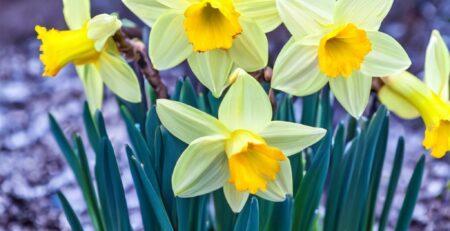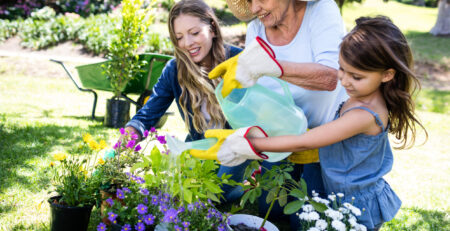Guide for Fruit Trees: Planting, Caring, & Maintenance
What’s better than fresh fruit straight from your own backyard? Fruit trees are a fantastic addition to any landscape, providing shade and fresh fruit. In this blog, we’ll talk about fruit tree care and how to yield your best fruit.
1.Fruit Needs Full Sun
In order to produce fruit, fruit trees need at least 6 hours of sunlight a day. Plant in an area that the sun won’t blocked by buildings or fences.
2.Give Them Space
Plant your tree at least three feet from sidewalks and driveways, and at least six feet away from buildings. The roots will spread wider than the tree crown and can crack foundations and pavement. Be sure to allow ten to fifteen feet of space between fruit trees.
Fruit trees love well-draining soil, so if your soil is mostly clay, you’ll want to add a compost mixture into it. The hole should be twice as wide as the roots, but don’t dig down too deeply. The graft of the tree should be above the soil. Planting any lower will smother the roots. Spread out the roots and make sure they aren’t exposed when you fill the hole. When getting ready to plant, soak the root ball and be sure to fully saturate it. After planting, use a hose to soak the roots and collapse any air pockets in the soil. Protect your tree from wind and snow; if it’s in an especially windy area, you can stake the tree to keep it upright and planted.
3.Water, Water, Water
Keep your fruit trees hydrated by watering when the top 2″ of soil are dry. For the best crop, fruit trees require periodic deep watering. Note that watering deeply and infrequently is better than shallowly and frequently. Mulching around the base of the tree will help retain moisture in the soil.
4.Fertilizer is Key
Apply a high-nitrogen fertilizer in early spring to give the roots a boost of nutrients – but don’t fertilize right away; this can kill the young roots. However, if you’re noticing that your tree isn’t yielding quite so much fruit at harvest time, you might need to make some adjustments. Signs of over-fertilizing are lots of leaves and shoots, with not a lot of fruit. Too much fertilizing could even make the tree weak from too-rapid growth, so be sure to follow application instructions. Too-little fertilizing will yield slow growth and under-performance; you won’t get as much fruit in this situation either. Don’t fertilize in late summer or fall; any new growth can and will be damaged by frost.
Prune suckers growing from the base of the tree or straight up on horizontal branches. They don’t produce fruits and crowd other branches.
Other Tips:
- Thin fruits to eliminate diseased or insect-infected fruits. This also reduces fruit loads, prevents branch-breaking, and prevents alternate-year bearing.
- Apples, pears, and plums are more tolerant of less-than-ideal conditions.
-
What Fruit Trees Are Best for Northeast Area – Zone 5?
- Cherries
- Apples; some varieties need a certain amount of cold hours a year to perform at their best
- Peaches
- Citrus trees are best for patios and sun porches so they can be brought indoors in the winter; they are not hardy to this area








